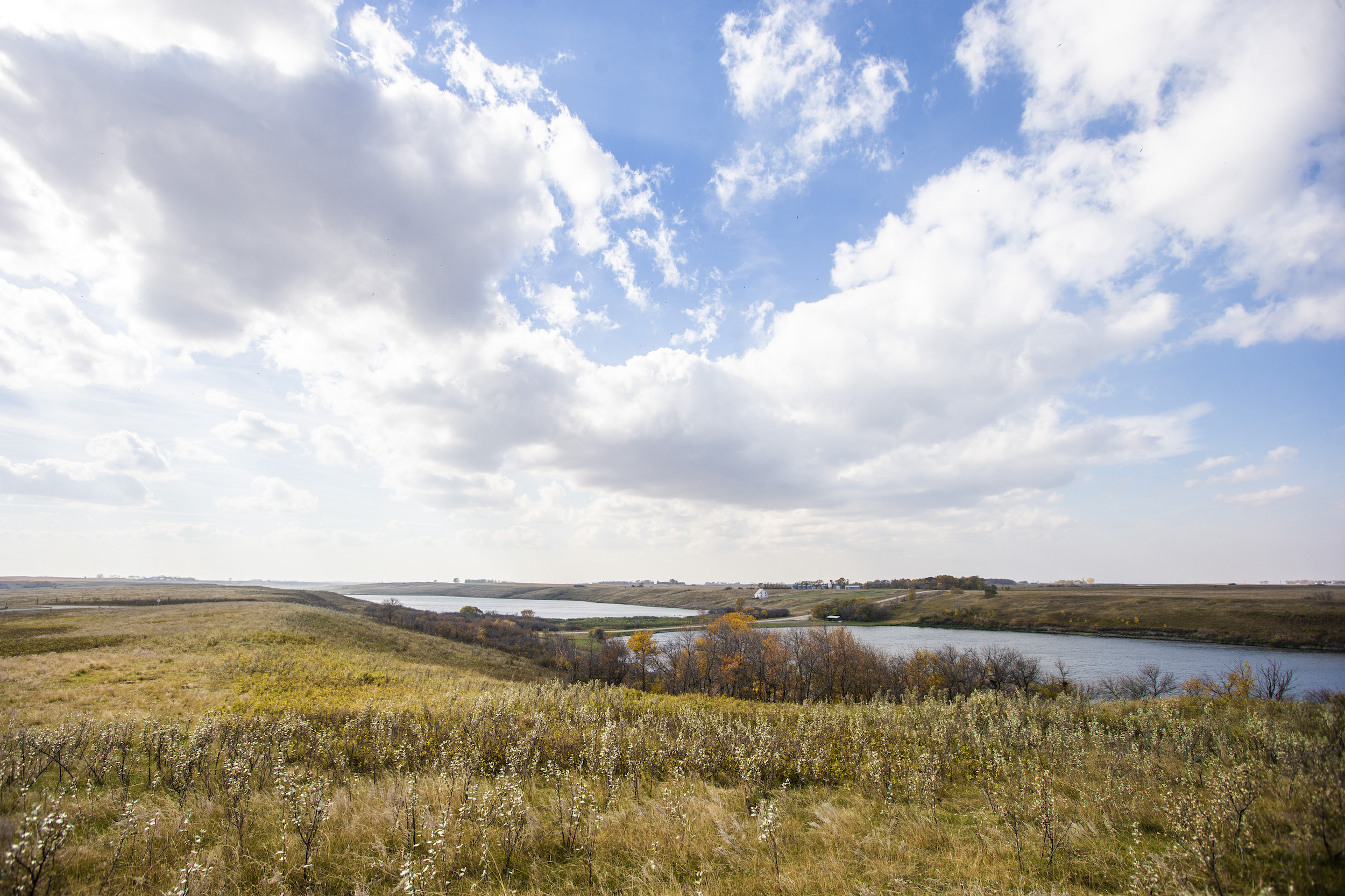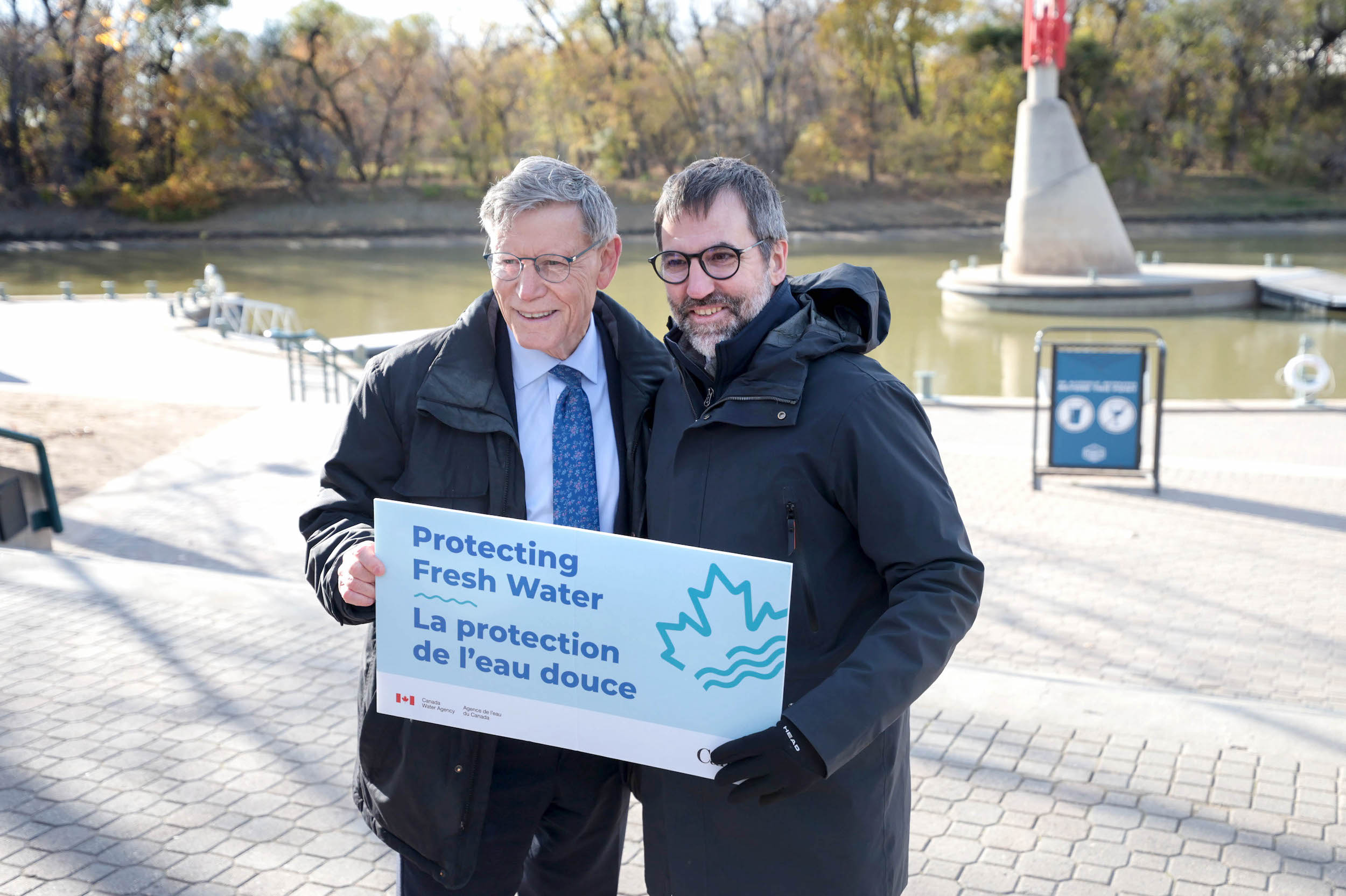
Celebrating 7 years of The Narwhal — and gearing up for the next 7
Between a fresh take on engagement and our new life on video, our team is...
Get the inside scoop on The Narwhal’s environment and climate reporting by signing up for our free newsletter.
Home to more than 100,000 lakes, rivers, creeks and streams, and more than 200,000 square kilometres of wetlands, Manitoba is no stranger to water — and now it will put that expertise to use as a new hub for Canada’s water policy, research and funding initiatives.
At the Forks, a traditional Indigenous meeting place at the confluence of the Red and Assiniboine Rivers, federal Environment and Climate Change Minister Steven Guilbeault joined provincial and municipal leaders on Wednesday to launch the Canada Water Agency, a standalone federal body that will coordinate funding and programming to manage the country’s freshwater resources.
“The agency will help the Government of Canada better address current water challenges and those of the future,” Guilbeault told the crowd gathered at the Forks in downtown Winnipeg. “We need to be prepared for what comes in the future, we need to recognize that water is becoming more scarce and more precious. We have a responsibility to protect the waters we have.”

The federal Liberal party first announced its intent to form a national water management organization in 2019. In 2023, the government announced the agency would be headquartered in Winnipeg and supported by an $85.1-million investment over five years. Legislation was passed in June to allow the agency to operate independent of the government.
Guilbeault noted the agency is launching at a time when climate change is intensifying the challenges facing Canada’s abundant freshwater resources.
“Droughts, floods [and] pollution from farming and industrial activities have significant impacts on water quality — impacts that are very serious and costly,” he said, adding severe weather caused $7 billion in insured losses this summer, shattering weather damage records.
The agency will be responsible for guiding water policy and administering funding to programs that protect, rehabilitate and respond to emerging issues in eight major Canadian watersheds: Lake Winnipeg, Lake of the Woods, the Great Lakes, Lake Simcoe and the Mackenzie, Fraser, Saint John and St. Lawrence Rivers. The 2023 federal budget earmarked $650 million over 10 years for these freshwater ecosystem initiatives.
Daniel Wolfish, interim president of the Canada Water Agency, said the organization launched as a branch of Environment and Climate Change Canada in summer 2023 and began work to enact the national freshwater action plan. It has already disbursed more than $90 million to projects strengthening freshwater management, including investments in rehabilitating contaminated sites like Lake Ontario’s Randle Reef and efforts to address nutrient pollution, according to Environment and Climate Change Canada.
According to Terry Duguid, parliamentary secretary to the prime minister and special advisor on water, reducing nutrient pollution and cleaning up contaminated waterways will be among the agency’s primary focuses in the coming years.
“[The focus] is to address the kinds of issues that Lake Winnipeg is facing: too many nutrients that make their way into our waterways and into our lakes — causing algae blooms, affecting fisheries, affecting tourism, affecting our economy and people’s way of life,” Duguid, the member of parliament for Winnipeg South, said in an interview.
But addressing watershed challenges requires coordination across federal, provincial, local, Indigenous and international governments, he noted. Lake Winnipeg’s watershed, for example, starts in the Rocky Mountains, crosses the border into Ontario and touches four American states.

Describing Canada’s previous water management regime as “very fragmented,” Duguid said the new agency will focus on better coordination among government departments and levels of government. Its priorities will include reviewing and modernizing the 1970 Canada Water Act and establishing a national freshwater data strategy.
“We need to share data and work collaboratively in order to manage our watershed with the best science,” Duguid said. “What happens upstream ends up downstream.”
The agency will prioritize partnerships with Indigenous governments, and will work towards coordinating government bodies on issues like access to clean water in First Nations.
“First Nations, Inuit and Métis have a special relationship with water because Indigenous people understand that water is the lifeblood of our bodies, water is the lifeblood of our economy and water is the lifeblood of our country,” Northern Affairs Minister Dan Vandal said at the gathering.
The Water Agency headquarters are in downtown Winnipeg, side by side with offices of Environment and Climate Change Canada and the Meteorological Service of Canada. The office will also host a regional arm of the water agency. Wolfish said the agency will open five regional offices in Quebec, Ontario and British Columbia and will employ more than 200 staff, about half of whom will be based in Winnipeg.
“Water has always been central to Winnipeg’s identity,” Mayor Scott Gillingham said. “The rivers have shaped our history and no doubt they are shaping our future as well.”
Julia-Simone Rutgers is a reporter covering environmental issues in Manitoba. Her position is part of a partnership between The Narwhal and the Winnipeg Free Press.
Get the inside scoop on The Narwhal’s environment and climate reporting by signing up for our free newsletter. On a warm September evening nearly 15...
Continue reading
Between a fresh take on engagement and our new life on video, our team is...

The public has a few days left to comment on Doug Ford’s omnibus development bill....

115 billion litres, 70 years to fix, $5.5 billion in lawsuits
